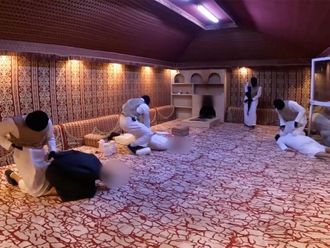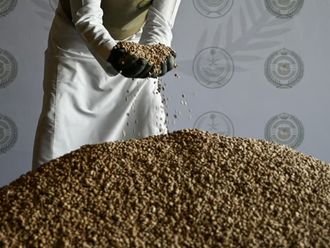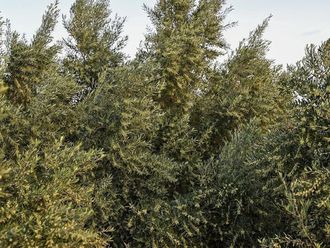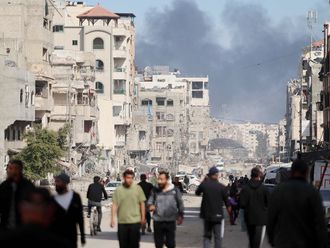
Highlights
- Saudi Arabia opens to tourism for the first time
- Kingdom is launching a new visa regime for 49 countries
- Historic change marks major Vision 2030 milestone, fueling investment and creating a million jobs
Riyadh: Saudi Arabia has announced that it will open its doors to international visitors as part of efforts to boost tourism.
The Kingdom is launching a new visa regime for 49 countries and appealing to foreign companies to invest in a sector it hopes will contribute 10 per cent of gross domestic product by 2030
Tourism chief Ahmed Al Khateeb said abayas will not be mandatory for women tourists but modest dress is, including at public beaches.
Visas will be available online for about $80 (Dh294), with no restrictions for unaccompanied women as in the past. Access to the Muslim holy cities of Makkah and Medina is restricted.
Further details of the new visa rules will be announced on Friday evening at 10.30pm UAE time during an unveiling ceremony scheduled to take place at Ad Diriyah, a Unesco (United Nations Educational, Scientific and Cultural Organization) World Heritage Site in Riyadh.
Currently only citizens of Bahrain, Kuwait, Oman, and the UAE can travel freely to the country.
Authorities recently launched the website whereintheworld.co that reveals picturesque pictures of attractive destinations accompanied with various straplines such as “This is not the Maldives” and “This is not Petra”.
Economic impact
Opening Saudi to tourism is a key milestone in the implementation of Vision 2030, which seeks to diversify the country’s economy and reduce its dependence on oil.
Saudi Arabia expects to increase international and domestic visits to 100 million a year by 2030, attracting significant foreign and domestic investment and creating a million jobs.
By 2030, the aim is for tourism to contribute up to 10 per cent towards the Saudi GDP, compared to just 3 per cent today.
Billions of dollars are being spent to improve infrastructure and develop heritage, cultural and entertainment sites.
Saudi’s airport capacity is expected to increase by 150 million passengers per annum and an additional 500,000 hotel key cards will be needed across the country over the coming decade.
Details of a significant commitment of private sector investment is also expected to be announced later on Friday.
In a statement, Ahmad Al Khateeb, Chairman of the Saudi Commission for Tourism and National Heritage, said: “Opening Saudi Arabia to international tourists is a historic moment for our country. Generous hospitality is at the heart of Arabian culture and we look forward to showing our guests a very warm welcome.
"Visitors will be surprised and delighted by the treasures we have to share. Five UNESCO World Heritage Sites, a vibrant local culture and breathtaking natural beauty. To visitors we say: be among the first to discover and explore the treasures of Arabia. To investors we say: become part of the fastest growing tourism sector on earth.”
Saudi attractions
Visitors seeking unexplored heritage sites, an authentic cultural experience and breathtaking natural beauty will be surprised to discover Saudi Arabia’s many treasures.
Saudi Arabia boasts a surprisingly diverse range of landscapes, including the green mountains of Asir, the crystal waters of the Red Sea, the snow-covered winter plains of Tabuk and the shifting sands of the Empty Quarter.
A number of new tourist destinations are currently under construction, including the futuristic city of Neom, the Qiddiya entertainment city near Riyadh and a range of luxury destinations by the Red Sea.
Saudi Arabia is home to five Unesco World Heritage Sites:
- Madain Saleh in Al Ula, the largest conserved site of the civilisation of the Nabataeans south of Petra in Jordan.
- Al Turaif District in Ad Diriyah, the first capital of the Saudi state.
- Historic Jeddah, the Gate to Mecca, characterized by a distinctive architectural tradition.
- Rock Art in the Hail Region, showing 10,000-year old inscriptions of human and animal figures.
- Al Ahsa Oasis, with 2.5 million date palms the largest oasis in the world.
Saudi Arabia is home to 13 regions, each with a distinctive cultural tradition. It is also home to flourishing contemporary culture, with highlights that include the King Abdulaziz Centre for World Culture in Dhahran, the modernist sculpture park along the Corniche in Jeddah, the Jameel House of Traditional Arts in Jeddah, and the Nassif House in Jeddah’s Historical District.
Other attractions also include the annual Flowerman Festival in Asir, the Winter at Tantora festival in Al-Ula, and the Red Sea International Film Festival that is expected to launch in March 2020.












